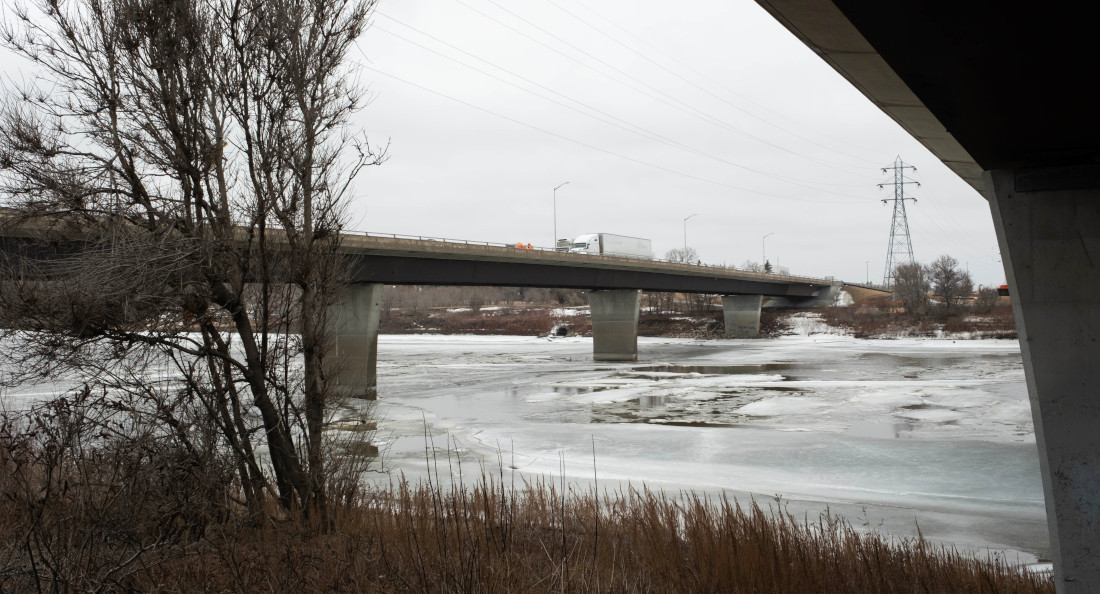Disgusting disasters
Sewage spill unveils ongoing environmental violence
On Feb. 7, a pipe carrying waste from Winnipeg’s southwest neighbourhoods to the South End Sewage Treatment Plant failed. The damaged pipe leaked raw sewage into the Red River near the Fort Garry Bridge.
At the time, officials were aware of problems with the line. A routine inspection in November 2023 found issues with two pipes built in the 1970s. In response, one was taken out of commission while the other, despite being in poor condition, was to remain until the city could complete a new bypass.
This was the pipe that failed, just two days after construction started on the bypass.
When the leak began, the city had to act quickly and expedite the bypass. However, getting the bypass operational was taking too long. Twelve days after the initial leak, the city sent out a plea for businesses and residents in southern Winnipeg to reduce their water use and lower the wastewater burden.
On Feb. 23, the bypass system was up and running. But within those 16 days, around 230 million litres of human waste was poured into the Red River.
In an open statement, Alexis Kanu, Lake Winnipeg Foundation’s executive director, described the event as “horrifying.”
While the effects on the local ecosystem are unknown at this time, Kanu’s statement says “Raw sewage contains high concentrations of phosphorus, which drives the growth of algal blooms in Lake Winnipeg. Raw sewage also contains E. coli, fecal co- liform and other pathogens with potential risk to human health.”
For at least the past decade, Lake Winnipeg has been constantly battling with the threat of eutrophication, the scientific term for excess algae growth in bodies of water due to increased nutrient load.
Eutrophication can have disastrous effects on aquacultures, lowering water quality, raising pH levels and blocking out needed sunlight for other organisms. Additionally, it has adverse impacts on human activity along Lake Winnipeg, such as recreation, commercial fishing and Indigenous ways of life.
The recent spill has contributed to the process of eutrophication, but there is a larger story involving the City of Winnipeg’s consistent poor management of their wastewater system.
In 2005, the city was issued a licence to upgrade its largest plant, the North End Sewage Treatment Plant, by 2014. As of 2024, these upgrades have not been made due to struggles to raise funds, at one point emanating from an argument between the municipal and provincial governments over the plant’s potential as a public-private partnership.
As a result, the poorly maintained plant has been spewing out inadequately treated waste for almost 20 years. According to the Lake Winnipeg Foundation, in December 2023 alone, the plant dumped 4.4 billion litres of undertreated sewage into the Red River.
Now, the South End Sewage Treatment Plant has begun to slip. The spill on Feb. 7 signifies the ongoing history of environmental violence the City of Winnipeg perpetrates towards the surrounding ecosystem. The city’s inadequate treatment of its waste- water infrastructure puts local ecosystems, people and cultural practices at risk.
The spill has opened questions regarding environmental law in the province about how affected communities are notified and whether the city has to pay for damages. As it stands, the City of Winnipeg’s irresponsibility regarding its wastewater infrastructure is disgusting, figuratively and literally.
Another question persists: what happens when cities that prioritize tax cuts run out of money for critical infrastructure resulting in significant damage to ecosystems, people and ways of life?
Patrick Harney (he/him) is the comments editor at The Uniter. This marks his sec- ond consecutive week writing about shit!
Published in Volume 78, Number 24 of The Uniter (April 4, 2024)







